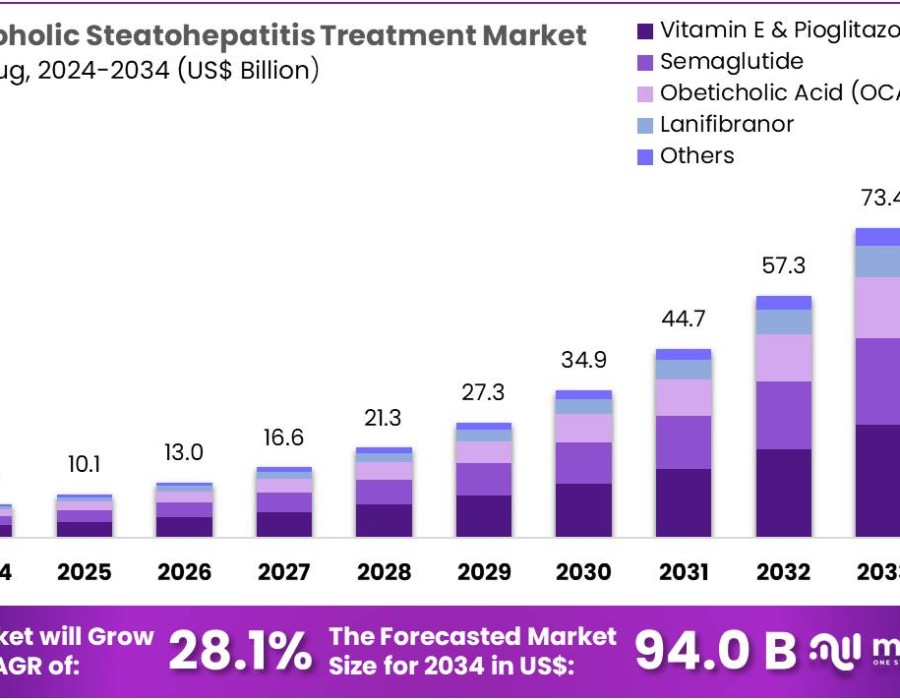The Non-Alcoholic Steatohepatitis (NASH) treatment market is projected to grow significantly, from US$ 7.9 billion in 2024 to US$ 94.0 billion by 2034, at a CAGR of 28.1%. This surge is driven by rising cases of obesity, type 2 diabetes, and unhealthy lifestyles—key risk factors for NASH. Increased awareness and improved screening methods are leading to earlier diagnosis, while public health campaigns and government initiatives are promoting liver health. Technological advancements, such as non-invasive diagnostics, have enhanced patient comfort and early detection. Regulatory bodies are also accelerating drug approvals, giving patients faster access to new treatments. Ongoing clinical trials are introducing innovative therapies targeting fat buildup and liver inflammation. Additionally, telemedicine and digital health tools support patient adherence and lifestyle management. Investments in healthcare infrastructure and provider training are improving access to timely, effective liver care worldwide, fueling continued market expansion.
![]()
Key Takeaways
- In 2024, the NASH treatment market generated US$ 7.9 billion, with projections estimating it will hit US$ 94.0 billion by 2034.
- The market is growing rapidly at a compound annual growth rate (CAGR) of 28.1% throughout the forecast period from 2025 to 2034.
- Among drug types, vitamin E and pioglitazone dominated in 2023, capturing 36.5% of the total market share for NASH therapies.
- Regionally, North America led the global market in 2023, holding a dominant 71.1% share due to high diagnosis rates and access to treatment.
- The U.S. specifically contributes significantly to North America's lead, thanks to strong healthcare infrastructure and ongoing clinical research investments.
Emerging Trends
- Name Change Reflects Metabolic Link
- Weight-Loss Drugs Gaining Attention
- Development of Advanced Biologics and RNA-Based Therapies
- Non-Invasive Tools and AI Integration





Comments